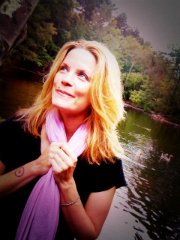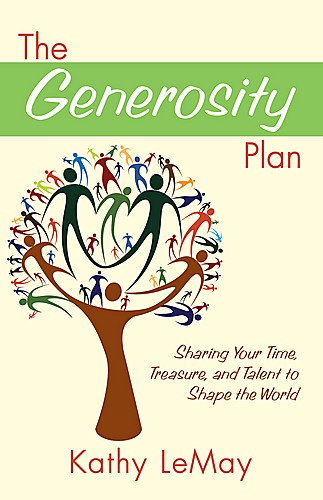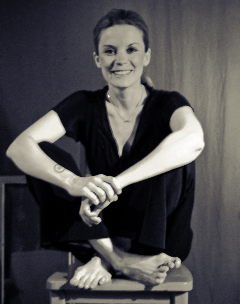 Women’s Worldwide Web interviews Kathy LeMay, CEO of Raising Change and author of The Generosity Plan.
Women’s Worldwide Web interviews Kathy LeMay, CEO of Raising Change and author of The Generosity Plan.
Kathy LeMay is an activist, author, and CEO of Raising Change, an organization dedicated to raising capital for philanthropic projects and social change worldwide. In 1994, Ms. LeMay volunteered in war-torn Yugoslavia, where she worked with women survivors of the siege and rape-genocide camps. This experience reinforced her commitment to raising the awareness of women’s rights and building a critical mass of women leaders. Since then, Ms. LeMay has raised more than $100 million in philanthropic dollars in the fields of women’s human rights, hunger and poverty relief, HIV/AIDS, and movement-building. Her book, The Generosity Plan, describes the ways in which we can all incorporate individual philanthropy — our time, treasure, and talent — into our daily lives. It is, Ms. LeMay believes, only by making philanthropy part of each of our daily lives that we can, as a society, reap the rewards of lasting social change.
W4: In The Generosity Plan, you write:
“[The one thousand wealthiest people] may provide capital to get things started, but it is our collective talents, resources, and passions that will hold, care for, and sustain community well-being…The job will get done only when each of us gives of ourselves in the best and most powerful way we can.” What brought you to this epiphany?
KLM: When I began to see the role of love and heart in making real, lasting change, I knew that what was being asked of each of us was to love more deeply, show up more powerfully, care with profound bravery. I have witnessed small, quiet, gentle acts that have transformed both the person giving and the person receiving. During those times it was as if DNA had changed. The material part of our work—money, strategies, brainstorming, evaluation, metrics for success—is a critical part of making change happen, but without heart and love the work is devoid of its own possibility. And possibility is what keeps hope alive and feeds our souls.
W4: You suggest some wise responses to naysayers, whom you quote as saying: “I’m not sure why you’re going to all this effort. You’re just one person. Even if you help a little, nothing is going to change,” or “Your priority area is the environment? How can you be thinking about trees when people don’t even have jobs?” Have your naysayers diminished in number throughout the years? And have some of them changed their views after having discussions with you?
KLM: There’s been a fantastic shift with naysayers. I think more people used to listen to naysayers who are critical for the sake of being critical. Now, I’m sensing that to most of us that just feels like noise. I’m not sure that my discussions with naysayers have shifted their thinking. However, what I think has happened is that people who used to allow naysayers to keep them silent (“I don’t want to be called naive”, etc.) aren’t making space for the negative anymore. I think the negative is uninteresting to people these days.
 W4: In your book, you give examples of the female half of a couple or business partnership taking care of the philanthropic arm of a business.“ When it comes to volunteering,” you write, “women hold up more than half the sky.” Why do you think this is the case? How can women use this tendency to their advantage? How can we balance the gender scale in terms of volunteering?
W4: In your book, you give examples of the female half of a couple or business partnership taking care of the philanthropic arm of a business.“ When it comes to volunteering,” you write, “women hold up more than half the sky.” Why do you think this is the case? How can women use this tendency to their advantage? How can we balance the gender scale in terms of volunteering?
KLM: Up until thirty years ago, the majority of the world’s women did not control the purse strings. More men worked than women, which meant women didn’t have a lot of philanthropic dollars at their disposal. However, what women have always given is time: to family, friends, neighbors, and strangers. In the past few decades, as women have begun to achieve greater economic independence, women have begun to give financial gifts in record numbers. In fact, a recent study at the Center of Philanthropy at Indiana University revealed that when it comes to giving money “women are more generous than men.”
Women should always remember that the gift of our time and talents is critical and urgently needed. Volunteering at a soup kitchen; giving blood; serving as a Board chairwoman—each of these services matter. Each counts. Each makes a difference. We should be proud of our tradition of giving time and continue to remind the philanthropic world of its value and power in improving human lives.
When it comes to balancing the gender scale, I think it’s significant that many men have told me that they regard volunteering as “women’s work”. The balance will come when this so-called “women’s work” has a brilliant and powerful connotation, for everyone. That time is coming.
W4: You describe two kinds of volunteering: formal (e.g. volunteering at a soup kitchen) and informal. “With informal volunteering,” you explain, “Hours contributed don’t get counted and you are most likely helping out friends, family, neighbors, or coworkers.”
If a culture—such as the traditional Chinese culture—places great value on informal volunteering (helping out family members, especially the very young and the elderly), should this culture’s citizens also find time, treasure, and talent to give to formal volunteering? How can one balance the two kinds of volunteering? In a developing country, a country in transition (again, like China), how can one motivate citizens to volunteer outside of the family circle?
KLM: What I love about giving is that giving traditions are rich, vast, diverse, and expansive—a reflection of all the great cultures of the world. What I see in the space of generosity is the opportunity to witness how different traditions give back, and to consider how those traditions could become part of our own traditions. I think that Americans can, for example, learn from the people of China, and the people of China can learn from Americans. Black philanthropy in the United States is a powerful force that has built churches, universities, and communities. Native American philanthropy is deeply rooted in community and service to Spirit and the greater good. I encourage people to live not only in their traditions but also to experience the joy that arises when you watch how others serve and imagine bringing that into your orbit as well.
Some sorts of volunteering—for example, volunteering in one’s neighborhood animal shelter—may yield immediate and obvious benefit to both the giver and the recipient. But when it comes to giving time, treasure and talent to humanitarian or development organizations, the giving may feel more abstract; it may take a lot longer to see evidence that the giver’s actions are helping. How do you determine the effectiveness of your giving to humanitarian or developmental organizations that work with people in faraway places?
If you’re looking to have relational fulfillment, you will definitely find this in your own backyard. Being in relationship with your neighbors and serving them is one of the best gifts you can give yourself. And when you’re looking to make lasting global change, which doesn’t always offer the same immediate gratification, there are ways that you can assess the effectiveness of your work and develop a strong, meaningful connection to it. When you discover the global issue that touches your heart, you can find out from others who have been volunteering what keeps them in the work. What maintains their momentum and hope? How and why do they keep going? You could also consider traveling outside of the United States to witness the lives of people who have survived profound challenges and live in incredible circumstances. You will learn more from them than you could ever imagine.
W4: Our blog, VOICES, aims to raise awareness of the real lives of women, children, and men around the world, telling the stories of ordinary and extraordinary people. On your website, you say that you are “sought-after on strategies for social justice and empowering women to come into their voice.” In what ways have you worked specifically to empower women to (as you so beautifully put it) “come into their voice”?
 KLM: I’m lucky to come from a long line of women who believed in voice as a force for change. I think the small contribution I make is to help women to give themselves permission to be “in their voice” always, without exception, without apology. Being in your voice has authenticity, dignity, and is filled with calm and possibility. I think that by being in my own voice, always, in my way, I help other women to see what that looks and sounds like. After a speech, a woman once said to me: “I always thought that to have your voice, you needed to drown someone else out. That is what I was taught. Talk above the rest. Now I see that having your voice is about helping others have theirs.”
KLM: I’m lucky to come from a long line of women who believed in voice as a force for change. I think the small contribution I make is to help women to give themselves permission to be “in their voice” always, without exception, without apology. Being in your voice has authenticity, dignity, and is filled with calm and possibility. I think that by being in my own voice, always, in my way, I help other women to see what that looks and sounds like. After a speech, a woman once said to me: “I always thought that to have your voice, you needed to drown someone else out. That is what I was taught. Talk above the rest. Now I see that having your voice is about helping others have theirs.”
W4: What moves, motivates, or inspires you?
KLM: People’s and animals’ boundless resiliency. And the feeling of an energy that says, “You got this. Just keep going.”
All photo credits for Kathy LeMay’s portraits used above are reserved for Michel Bellici.
© Women’s WorldWide Web 2010













